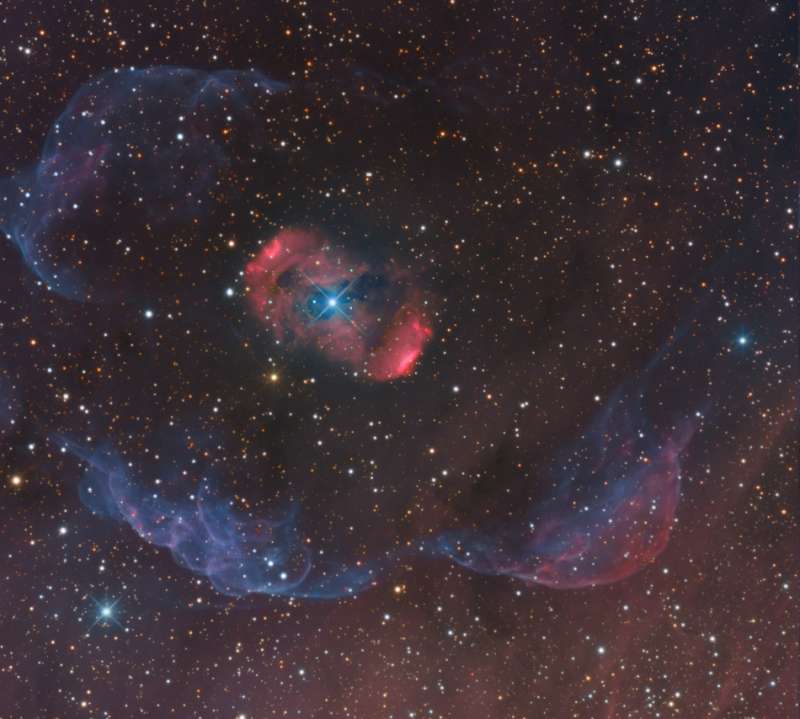
|
Credit & Copyright: Martin Pugh &
Rick Stevenson
Explanation:
Beautiful emission nebula NGC 6164
was created by a rare, hot, luminous
O-type
star, some 40 times as massive as the Sun.
Seen at the center of the cosmic cloud, the star is a mere
3 to 4 million years old.
In another three to four million years the massive star will end its
life in a supernova explosion.
Spanning around 4 light-years,
the nebula itself
has a bipolar symmetry.
That makes it similar in appearance to more common and familiar
planetary
nebulae - the gaseous shrouds
surrounding dying sun-like stars.
Also like many planetary nebulae, NGC 6164 has been found to have
an extensive, faint halo,
revealed in this deep telescopic image of the region.
Expanding into the surrounding
interstellar
medium,
the material in the
halo is likely from an earlier active phase of the O star.
The gorgeous skyscape
is a composite of extensive narrow-band image data,
highlighting glowing atomic hydrogen gas in red and oxygen in blue hues,
with broad-band data for the surrounding starfield.
NGC 6164 is 4,200 light-years away in the
right-angled southern constellation
of Norma.
Second Beta Test:
APOD Image submission system ;
Comments and Feedback
|
January February March April May June July August September October November December |
| ||||||||||||||||||||||||||||||||||||||||||||||||
NASA Web Site Statements, Warnings, and Disclaimers
NASA Official: Jay Norris. Specific rights apply.
A service of: LHEA at NASA / GSFC
& Michigan Tech. U.
Based on Astronomy Picture
Of the Day
Publications with keywords: halo - emission nebula
Publications with words: halo - emission nebula
See also:
- APOD: 2025 December 9 Á The Heart of the Soul Nebula
- APOD: 2025 September 19 Á The NGC 6914 Complex
- APOD: 2025 September 10 Á The Great Lacerta Nebula
- APOD: 2025 July 21 Á Cats Paw Nebula from Webb Space Telescope
- APOD: 2025 July 16 Á The Rosette Nebula from DECam
- APOD: 2025 July 5 Á Ou4: The Giant Squid Nebula
- APOD: 2025 June 26 Á The Seagull Nebula
